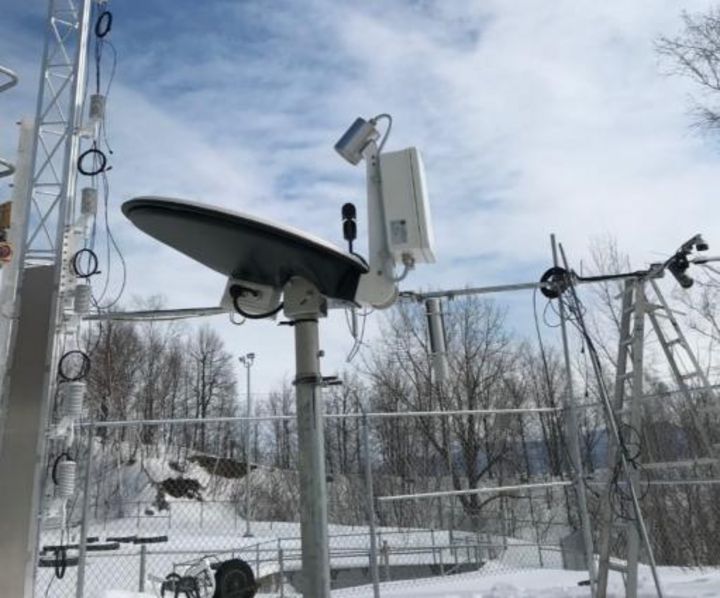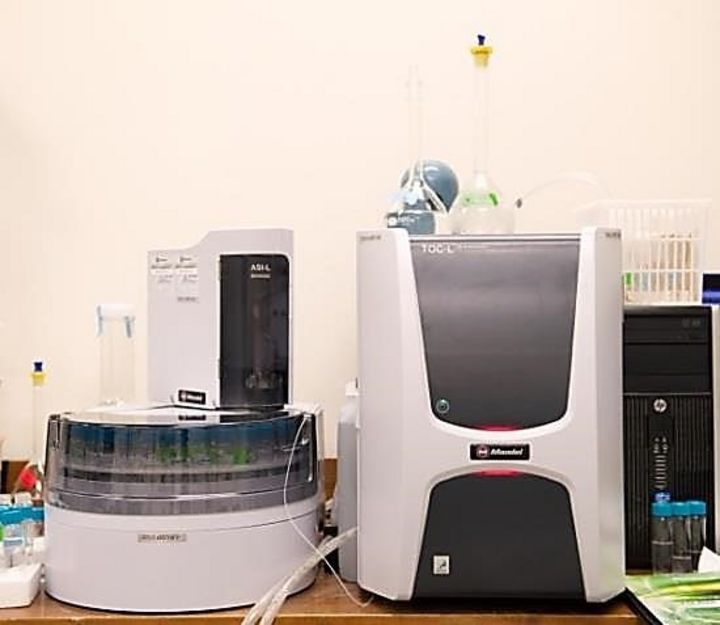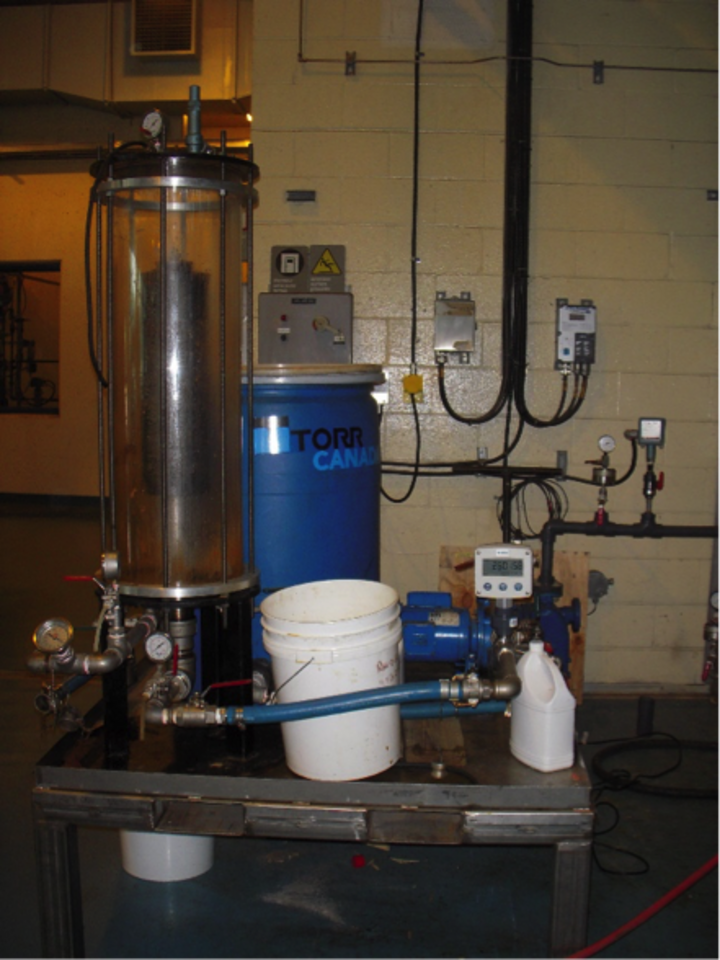
The Earth Observation System (EOS) provides the infrastructure needed to study and document ecosystems in the St. Lawrence River Valley (VFSL) in Quebec in order to develop a quantitative predictive model of system-wide interactions in the geobiosphère-climate of the region. A key aspect of EOS is its ability to include a combination of fixed facilities and a flexible mobile infrastructure to observe and analyze the Dynamic Terrestrial System (DES) in remote areas of Quebec. The VFSL climate is characterized by exceptional weather conditions (eg, ice storms), varied uses of land (urban, natural, etc.) and biodiversity flows (species loss and invasion).

- Atomic absorption spectrophotometer (flame and graphite furnace)
- Automated titrator and Karl Fisher
- Capillary electrophoresis
- Differential Scanning Calorimeter (DSC)
- Fluorescence Spectrometer X (XRF)
- FTIR infrared spectrometer with cell specialized in gas and biogas analysis
- Fluorimeter
- Gas chromatograph (GC-TCD) for gas analysis
- Gas chromatograph (GC-FID)
- FTIR Infra-Red Spectrometer For Solid And Liquid Samples
- Ion chromatography
- Gas chromatograph combined with a mass spectrometer (GC-MS)
- High-performance liquid chromatography combined with an ion-trap mass spectrometry (LC-MS)
- High-Performance Liquid Chromatography (2 Units, One Of Which Is Equipped With A Fraction Collector)
- High-Performance Liquid Chromatograph With An ELSD Detector (Electrospray Light Scattering Detector)
- Kjeldahl analyzer (total nitrogen and ammonia)
- Spectromètre d’émission optique muni d’un plasma à couplage inductif (ICP-OES)
- Thermogravimetric analyzer coupled with mass spectrometer (TGA-MS)
- Total organic carbon analyzer
The Aquatic Bio-optics and Biogeochemistry Laboratory enables researchers to study the effects of climate change and permafrost thawing on lake water transparency and mixing dynamics and their multiple impacts on the microbial food chain, greenhouse gas emissions, and oxythermal habitat. Research at the Aquatic Bio-Optics and Biogeochemistry Laboratory also focuses on developing optical equipment for early detection of algal and cyanobacterial blooms and other problems related to water browning.

/// Description :
- A 55 L / min, 15 psig capacity coalescing separation vessel, SS316 stainless steel and acrylic construction with internal support for TORR ™ coalescing cartridge and safety valve
- A centrifugal type electric water pump, 220 VAC, 15 amp
- A 200-liter plastic back-up tank with removable cover for storing and recirculating water
- Set of 1 '' industrial piping, flexible for interconnection of the various elements of the system
- Set of valves for component isolation and for pump flow control
- Pressure gauges at the entry and exit of the vessel
- A 48 '' x 48 '' stainless steel table with retention walls in the event of a system leak on which all system components rest
- 10 sealing washers for replacement
- Made and assembled in Quebec
- Works with TORR ™ coalescing cartridges. Model TC-008-2, 6 '' diam x 20 '' high, nylon and nitrile gaskets
Processing and analysis of earth observation images in order to map and model environmental phenomena in the context of climate change. The research team in Environmental and NORdic Remote Sensing (TENOR) works on the development and application of digital approaches and the development of analysis and decision support tools applicable to various contexts by calling upon particularly in hydro-informatics, geomatics and remote sensing. The Environmental Remote Sensing by Drones (TED) laboratory includes different types of drones and a wide range of sensors: two hyperspectral cameras (400-1700 nm), a thermal infrared camera, a multispectral camera with interchangeable filters and a digital camera. The TENOR team also has a computer laboratory equipped with software specialized in image processing and geomatics, as well as field instrumentation (georadar, snow and ice corers, hydrometeorological sensors, etc.) necessary for the development and validation of algorithms.
/// Features:
- Processing volume: 1 to 4 L
- Operating pressure up to 600 psi
- Feed flow ranging from 1 L/min to 6 L/min
- Membrane coupons for MF, UF, NF, and OI
- Can be adapted to forward osmosis
/// Samples:
- Liquids: effluents, residual liquids, process waters, fluids, etc.
/// Examples of applications
- Scanning and selection of the type of membrane to be used
- Optimization of membrane filtration parameters: flow, pressure, temperature
- Studies of the effects on liquids and membranes (precipitations, clogging, pressure drop, etc.)
/// Features:
- Enables the simultaneous testing of several flocculation / pre-filtration conditions
The purpose of the BEREV is to characterize the water cycle and the surface flows (energy, water and carbon) in a boreal environment in order to increase our understanding of the hydrological and hydrometeorological processes in the presence of abundant snow, in support of a better modeling and better forestry practices. In particular, BEREV has micrometeorological equipment above the canopy. To know more, watch this webinar about the BEREV: https://youtu.be/-bbwMuuYLYg
The main equipment for characterizing the physical and geochemical properties of aquifers is a specialized Geotech 605 drilling rig. With the data collected, it is possible to model the flow of water and the transport of contaminants in aquifers. It is also possible to assess the vulnerability of aquifers to contamination, to determine the most suitable protection methods and methods of exploitation for sustainable management of the groundwater resource. This crawler drill has a real-time recording system of mechanical and electrical soil responses. It also allows soil or groundwater sampling by installing observation wells. The system has two drilling heads, one for drilling by penetration (cone penetration) in loose deposits, and another equipped with a hydraulic hammer for rotary impact drilling up to 50 m in rock and loose deposits according to the conditions.
The research conducted at the Geothermal Open Laboratory is aimed at gaining better understanding of underground heat transfer and flow phenomena for reducing technical risks of geothermal energy. It is an open access laboratory, modeled after open-source software.